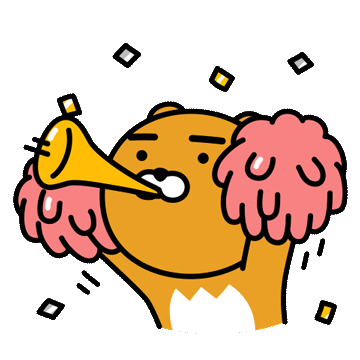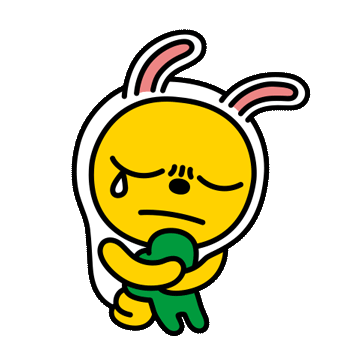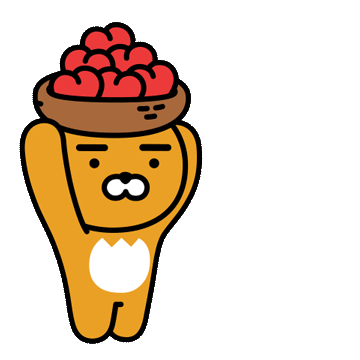안녕하세요~
로메쌤입니다.

저번 시간에 이어서
오늘도 불안에 관한
기사입니다.
이 기사를 해석하면서
나는 불안이 높은 사람
인데 그걸 긍정적으로 생각
하는 노하우를 배운거 같아서
기뻤습니다.

여러분도 기사를 읽고
노하우를 배워보세요~!!

It called the finding “a wake –up call to all countries to step up mental health services and support.”
정신건강 서비스와 지원을 모든 나라에 구축해야 하는 경각심을 가지고 주의 해야 하는 것으로 여기다.
Do we know for certain this date represents a public-health crisis?
우리는 이 데이터가 대중의 건강위기를 나타낸다는 것을 확실히 알고 있나?
Or could it mean that millions of people are quite rightly feeling uncertain, stressed out and afraid?
또는 그것은 수백만의 사람들이 꽤 불확실해하고 스트레스를 받고, 두려워 하다는 것을 의미할 수 있을까?
The difference is important.
차이점은 중요하다.
For example, the US Department of health and Human Services now recommends that family doctors do routine screenings for anxiety.
예를 들어, 미국 보건복지부는 지금 가족 주치의들이 불안을 정기적으로 검사하는 것을 권고하고 있다.
It’s a positive development in that it recognizes the impact that anxiety disorders can have on those at risk.
불안장애는 위험할 수 있다는 것을 인식한다는 점에서 그것은 긍정적인 발전이다.
*in that 이므로
But what if initiatives like this funnel some of us into unnecessary treatments and medications?
하지만 만약 이러한 계획이 우리들 중 몇몇에게 불필요한 치료와 약처방을 하게 한다면?
*initiatives 계획
Could it make us lose sight of the benefits of our doubts and ‘what ifs’?
그것은 ‘만약에’와 우리의 의심의 장점들의 면을 잃게 할 수 도 있을까?
We can experience healthy, often completely valid, periods of distress without being categorized as mentally ill, according to behavioural psychologists.
행동심리학자들에 따르면, 우리는 정신적으로 아프게 분류되지 않으면서 건강하고, 종종 완전히 유효한 고통의 기간을 경험할 수도 있다.
Anxiety is an adaptive strategy in human evolution.
불안은 인간진화에 적합한 방법이다.
It helps us to prepare for the uncertain future, “to remain vigilant,” Dennis-Tiwary says.
그것은 확실하지 않은 미래를 대비하게 우리를 도와준다. “바짝 경계상태를 유지함으로써” Dennis-Tiwary 말한다.
Anxiety prompts us to resolve projected unknowns by planning and imagining, by plotting out possible scenarios.
불안은 가능한 시나리오를 짜보거나, 상상하거나, 계획함으로써 우리가 예상할 수 있는 밝혀지지 않은 것들을 해결하도록 한다.
“From an evolutionary point of view,
진화적인 관점에서 볼 때
anxiety is the best emotion to helps us manage uncertainty because it forces us to run those ‘what-if’ simulations,” she says.
불안은 우리가 확실하지 않은 것들을 관리할 수 있도록 돕는 최고의 강점이다. 왜냐하면 그것은 만약에 라는 상황들을 돌려보게 하기 때문이다.
Likewise, neuroscientist Wendy Suzuki points out in her book
마찬가지로 신경과학자 Wendy Suzuki는 그녀의 책에서 지적한다.
Good anxiety: Harnessing the power of the most Misunderstood emotion
좋은 불안: 가장 오해 받는 감정의 힘을 활용하기
*Harness마구,벨트, 이용하다
that “If we simply approach anxiety as something to avoid, get rid of or dampen,
“만약 우리가 단순히 불안을 피하기 위한, 없애거나, 약화 시켜야 할 무언가로 다가간다면,
we not only don’t solve the problem it’s alerting us to,
우리는 우리에게 알려주고 있는 문제를 풀지 못할 뿐 아니라,
but actually miss an opportunity to leverage the generative power of anxiety.” By generative,
또한 사실은 불안의 원동력을 사용할 기회를 잃어버리는 것이다.
she means that it can prompt us to move out of a situation that’s no longer working, to find the energy we need to get unstuck.
그녀는 우리가 필요한 에너지를 찾기 위해 갇혀서 더 이상 효과가 없는 상황에서 빠져 나오게 하려 하는 것을 의미한다.
When we’re in an anxious state, the amount of dopamine in our brains increases, which prompts us to take action.
우리가 불안한 상태에서는, 우리의 두뇌에서는 행동을 취하게 하는 도파민의 양이 증가한다.

In evolutionary terms, millions of years ago that might have meant looking for shelter to evade predatory animals.
진화론적인 관점에서, 수백만 년 전에, 그것은 포식동물을 피하기 위해 피신할 곳을 찾는 것을 의미했을 것이다.
* predatory animals 포식동물
Today, it might mean leaving a job because of a predatory boss.
오늘날은 포식보스 때문에 직업을 떠나는 것을 의미할 수도 있다.
By not facing out anxiety, we lose its benefits, and can make things worse.
불안을 직면하지 않음으로써, 우리는 이득을 잃고, 더 상황을 악화시킬 수 있다.
Case in point for me: hiding unopened envelopes from the tax department in a drawer-
나로써는, 세금부서의 서랍에서 닫힌 봉투를 숨기는 것이다.
even if they could be just the routine updates that self-employed people like me receive-until I’ve turned it into a full- blown phobia.
비록 그것들이 엄청난 공포증으로 바꿀 때까지 자영업자인 나 같은 사람들이 받는 일상적인 업데이트일수 있더라도
* phobia 공포증
Says Alice Boyes, whose has as phD in clinical psychology and wrote The Anxiety Toolkit,
불안의 도구들이라는 책을 쓰고 임상심리학에서 박사학위를 가진 Alice Boyes가 말한다.
* clinical psychology 임상심리학(인간에 대한 이해를 통해 그들이 겪고 있는 정신 장애나 심리적 문제를 평가하고 치료하는것을 목표로 하는 학문)
coping with unpleasant feelings by avoiding them just reinforces your insecurity,
불안을 피함으로써 느끼는 불쾌한 감정을 겪는 것은 너의 불안감을 강화시킬 뿐이다.
because you’re not getting better at solving the problem: ”Over time, you will feel less and less competent.”
왜냐하면 너는 문제를 해결하는 것이 전혀 나아지지 않았기 때문이다. : 시간이 지날수록 더욱 더 능력이 떨어지는 것을 느낄 것이다.
The key is to manage unease before it overtakes us, like tending a garden so the weeds don’t spread.
열쇠는 불안이 우리를 사로잡기 전에 우리가 불안감을 관리하는 것이다. 그것은 마치 잡초가 자라기전에 정원을 가꾸는 것과 같다.
But how? According to Suzuki, solutions include meditation, exercise, compassionate connection such as volunteering, access to nature and mentally reframing what we’re experiencing.
하지만 어떻게하냐고? Suzuki에 따르면 해결책은 명상, 운동, 봉사활동과 같은 연민적 연결, 자연과 가까워지기 그리고 우리가 경험한 것을 정신적으로 다시 구성하는 것을 포함한다.
* compassionate 연민어린, 동정하는
For example, in her book Suzuki writes about a start-up entrepreneur who was beginning to feel daunted by everything that could go wrong in his high-stakes venture.
예를 들어 그녀의 책에 Suzuki는 고위험 벤처에서 모든 것이 잘못 될수 있다고 느끼기 시작한 스타트업 기업가에 대해 썼다.
This generated all kinds of ‘what if?’ anxiety that kept him sleepless.
이것은 잠을 이룰 수 없게 하는 불안과 ‘만약에?’들을 야기시킨다.
He was, in psychological parlance, catastrophising.
심리적은 말투에서 그는 절망적이였다.
* parlance 말투
After talking to a mentor, he found a new tool: a ‘reframe’.
멘토와 이야기한 후 그는 재구성이라는 새로운 도구를 발견했다.
He turned ‘what ifs?’ into a goal-directed to-do list: “If this were to happen, then what could I do? Well, I could do X.”
그는 “만약에?”를 목표지향적인 할 일들로 변경했다.: “만약 이런 일이 생긴다면, 그러면 나는 어떻게 할 수 있을까? 글쎄, 나는 이렇게 할수 있다.”
Dennis-Tiwary agrees that reframing is crucial.
Dennis-Tiwary는 재구성하는 것이 중요하다고 동의한다.
She points to a 2013 Harvard study in which socially anxious people were asked to speak in public.
그녀는 사회적으로 불안한 사람들이 대중 앞에서 연설하는 것과 관련해 2013 하버드연구에서 지적한다.
The researchers told some of them that having sweaty palms and a dry mouth or shaky knees was a good sign, a ‘positive coping tool’ that optimizes the body for performance.
연구자들은 몇몇 사람들에게 손에 땀이 나고, 입이 마르고, 다리가 후들거리는 것은 발표를 위해 몸이 최적화 하는 긍정적인 대처 도구인 좋은 징조라고 말했다.
The nervous speakers who heard this message had lower blood pressure and a slower heart rate.
이 메시지를 들은 긴장한 발표자들은 혈압이 낮아지고 심장박동수가 더 느려졌다.
In other words, they shifted to that sweet spot where they were ready for the challenge, but not distracted and alarmed by their own nervousness.
다른 말로 하면 그들은 도전을 준비하는 곳으로 이동했고 그들의 긴장에 불안해하거나 방해 받지 않았다.
전에 Ted강연에서 스트레스가
우리에게 주는 긍정적인 면에 관한
강의를 듣고 스트레스에 대한
부정적인 감정이 다소 줄어들었던
기억이 난다.
하지만 그래도 스트레스는
스트레스일뿐이다. ㅋㅋ

나는 극 인프제라 정말 소심
하기도 하고 생각도 너무 많아서
걱정도 불안도 굉장히
높은 편이다.
이정도면 스스로 감옥에 갇혀있다
라고 생각이 들정도이다.

이 기사에서는 그것을 오히려
역이용하라 라고 한다.
정보를 다시한번 모으고
그것들을 검토하고 더 나은 방향
으로 가게하고
불안한 것들의 가정을 세워
대비책을 세우라는 거다.
물론 지루하고 힘든 일들이다.
하지만 어차피 걱정거리가 있으면
내 몸과 마음은 편히 쉬지 못한다.
걱정하는데 시간을 보낼바에는
차라리 그렇게 하는게 더 효과적
일것 같다.
특히 여기서 말한
" a goal-directed to-do list"라는
단어가 가장 인상적이다.
불안을 목표지향적인 할일들로
바꿔버리는 재구성이
불안이 높은 사람들에게는
절대적으로 필요하다. ^^

다음편에 마무리 됩니다....
읽어주셔서 감사합니다. ^^

'Things to read in English' 카테고리의 다른 글
| 영어잡지 Reader's Digest : 7. World of Medicine 약의 세계 (2) | 2024.01.22 |
|---|---|
| 영어잡지 Reader's Digest : 6. <최종> The upside of Anxiety (1) | 2024.01.18 |
| 영어잡지 Reader's Digest : 4.The upside of Anxiety (3) | 2024.01.14 |
| 영어잡지 Reader's Digest : 2. Life's like that. (1) | 2024.01.13 |
| 영어잡지 Reader's Digest : 1. Eat your way to a Bloat-Free Belly (1) | 2024.01.12 |



